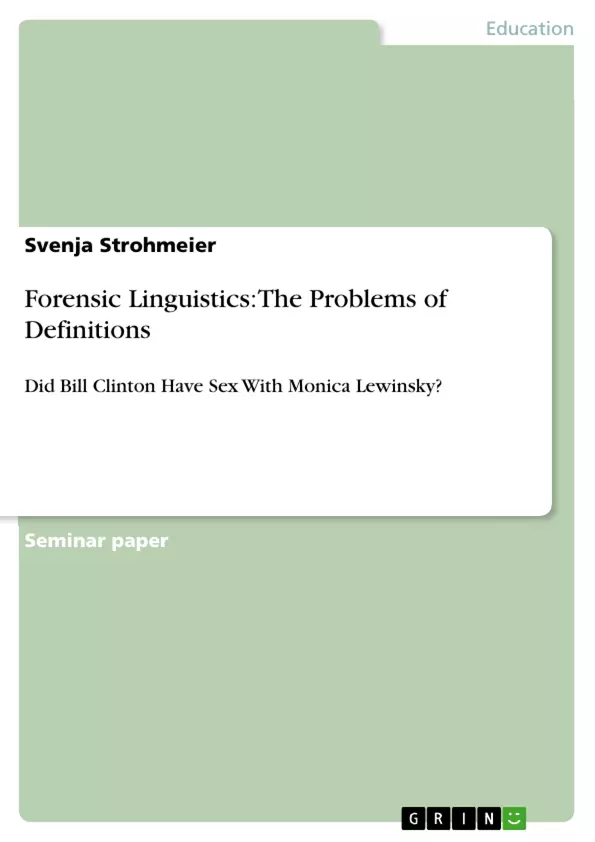The question if the former US president Bill Clinton had sex with the 22-year-old intern
Monica Lewinsky in the year 1998 is a question with different possible answers.
The president´s answer was “no”. The media´s answer was “yes”. But which answer is the
correct one?
To find out the truth, one problem is found: The problem of definition. The opinions offered
in this paper are the author´s very own opinions and definitions as well as the media´s.
Also, Bill Clinton´s and Monica Lewinksy´s opinions and statements are shown. In the end,
the question raised above is answered.
Table of Contents
- Introduction
- The story
- The media's view
- The court's view
- Conclusion
Objectives and Key Themes
This paper aims to analyze the definition of "sexual relations" in the context of the Bill Clinton-Monica Lewinsky scandal, focusing on the differing perspectives of Clinton himself, the media, and the court. It examines the implications of these differing definitions on the scandal and its aftermath.
- The subjectivity of defining "sexual relations" in a legal and social context.
- The impact of media coverage on public perception and the definition of events.
- The role of legal definitions and interpretation in shaping the outcome of high-profile scandals.
- The influence of personal and societal values on the understanding of sexual behavior.
- The consequences of conflicting definitions and interpretations on the reputations and careers of individuals involved in scandals.
Chapter Summaries
- Introduction: This section introduces the central question of whether Bill Clinton had sexual relations with Monica Lewinsky, highlighting the conflicting perspectives of Clinton, the media, and the public. It also states the author's intention to explore the problem of definition in this context.
- The story: This chapter outlines the key events of the scandal, including Lewinsky's relationship with Clinton, the allegations of oral sex, and Clinton's initial denial. It examines Clinton's definition of "sexual relations" and the role of Lewinsky's silence in the initial stages of the scandal.
- The media's view: This chapter explores the media's perspective on the scandal, focusing on their definition of "sexual relations." It examines various sources, including medical dictionaries, to illustrate the media's interpretation of the events and its potential impact on public opinion.
- The court's view: This section examines the court's involvement in the scandal, focusing on the perjury charges against Clinton and the consequences of his actions. It also highlights the court's focus on the legal definition of "sexual relations" and its implications for the case.
Keywords
This paper focuses on the key concepts of "sexual relations," "definition," "media," "court," "perjury," and "scandal." It examines the influence of societal values, legal definitions, and media representation on the understanding and interpretation of controversial events.
- Arbeit zitieren
- Svenja Strohmeier (Autor:in), 2013, Forensic Linguistics: The Problems of Definitions, München, GRIN Verlag, https://www.hausarbeiten.de/document/212356


